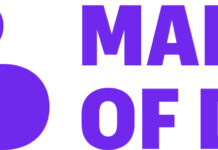SAN FRANCISCO, Feb. 4, 2016 /PRNewswire-HISPANIC PR WIRE/ — A contact lens with a built-in sensor could help determine which glaucoma patients have a higher risk of disease progression, according to a new study. Researchers from Columbia University Medical Center found certain patterns of electrical signals emitted from the “smart” contact lenses correlate with a faster rate of glaucoma progression. The findings are being published online today in Ophthalmology, the journal of the American Academy of Ophthalmology.
Photo – http://photos.prnewswire.com/prnh/20160203/329634
Logo – http://photos.prnewswire.com/prnh/20151114/287412LOGO
Glaucoma remains a leading cause of blindness.1 One of the main indicators of the disease is high pressure in the eye, or intraocular pressure. Doctors often check eye pressure to gauge a patient’s eye health. However, these tests yield a single snapshot in time and are impractical to perform at night when eye pressure typically rises. With the advent of smart contact lenses that monitor patients continuously, scientists are hoping to solve that problem.
Researchers at Columbia tested the lenses on 40 patients between ages 40 and 89 undergoing treatment for open-angle glaucoma, the most common form of the disease. Over two years, scientists performed at least eight standard visual field tests on these patients. Half were classified as having slow disease progression while the other 20 had fast disease progression.
The patients then wore a smart contact lens for 24 hours, including overnight as they slept. The lens’ sensor detects changes in lens curvature. As eye pressure fluctuates, the curve changes, generating an electrical signal sent to a wireless device that records the signals. Similar to how an electrocardiogram shows a heartbeat, the profile of signals from the smart lens indirectly shows eye pressure changes over time.
Investigators found that patients with steeper spikes recorded overnight and a greater number of peaks in their signal profile overall tended to have faster glaucoma progression. This information provides more insight into glaucoma and also a blueprint for deciphering the signals from this new wearable technology. Using these findings, clinicians can better estimate the risk of progression by looking at a readout from the smart lens. The findings could also have implications when using the lenses to evaluate glaucoma treatments.
“What we see in these measurements is a signature that indicates which glaucoma patients will get worse and which are relatively stable, which you can’t do with a one-time eye pressure measurement,” said study author C. Gustavo De Moraes, M.D., MPH, an associate professor of ophthalmology at Columbia University Medical Center. “This could be very useful if you want to know whether a new medication is working for a patient. You can see how their eye is reacting to the therapy in a much more meaningful way.”
The Sensimed Triggerfish® contact lens system used in this study is approved in Europe but does not currently have approval from the U.S. Food and Drug Administration. Other contact lens systems that can continuously measure eye pressure are also in development.
“Visual Field Change and 24-Hour IOP-Related Profile with a Contact Lens Sensor in Treated Glaucoma Patients,” De Moraes et al. Ophthalmology, article in press, Feb. 2016. DOI: dx.doi.org/10.1016/j.ophtha.2015.11.020. For a full copy of the study, please contact the Public Relations Department at [email protected].
For more information on glaucoma, visit the American Academy of Ophthalmology’s EyeSmart® public information website, www.aao.org/eye-health.
About the American Academy of Ophthalmology
The American Academy of Ophthalmology is the world’s largest membership association of eye physicians and surgeons. A global community of 32,000 ophthalmologists, we are passionate about protecting sight and fighting preventable blindness. For more than 120 years, we have been educators, innovators and advocates for the public and our profession to ensure the highest-quality medical and surgical eye care. Our EyeSmart® program is a preeminent source of eye health information for the public and empowers people to preserve their vision. For more information, visit www.aao.org.
About Ophthalmology
Ophthalmology, the official journal of the American Academy of Ophthalmology, publishes original, peer-reviewed, clinically-applicable research. Topics include the results of clinical trials, new diagnostic and surgical techniques, treatment methods, technology assessments, translational science reviews and editorials. For more information, visit www.aaojournal.org.







